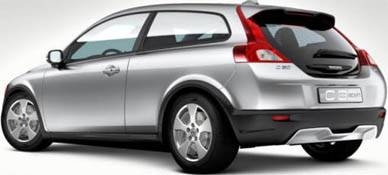
Vehicles such as small cars, station wagons and even SUVs are manufactured and sold with the Volvo trademark all around the world, although their primary market is in the United States. Volvo has been at the forefront of pioneering safety features for vehicles and has built partially electric vehicles to reduce emissions and lower gas costs for drivers.
The Volvo company was started in 1927 as a child company to the Swedish ball-bearing manufacturer Svenska Kullagerfabriken AB. It was originally intended to make ball-bearings, but switched to producing vehicles in April of the same year. In 1970, Volvo bought a Dutch car company called DAF so that they could also produce small cars in the Netherlands as well as continue exporting vehicles to the United States. In the early 1990s, Volvo split into two different companies called Volvo Group, which makes large commercial vehicles, and Volvo Cars, which makes smaller passenger vehicles. Volvo Cars was purchased by Ford Motors in 1998. Most of the models built by Volvo Cars from 2000 to 2006 have been either compact four-doors with hatchbacks, such as the C30 and S40, or modified hybrid designs that have the seating capacity of a station wagon or SUV but are still smaller than normal, such as the V50.

From the 1960s to the 1980s, most Volvo vehicles were identified by a three-digit code as well as the year that they were released. The first number of the code reflected the overall model, the second number reflected the type of engine that the vehicle used and the third number indicated the total number of doors that it had. Vehicles produced by Volvo from the 1990s on use a number and letter system, where letters such as "C" are used for convertible, or "S" for sedan. The numbers after the letter then indicate the series of the car. Volvo Cars also made a few series designated by an "X" such as the XC90, which is a mid-sized vehicle that looks like a cross between an SUV and a van.
The Volvo company has been responsible for several breakthroughs in vehicle safety that have since been adopted by other car manufacturers. Volvo introduced the first laminated windshield in an automobile and the first metal safety-cage design in 1944. They built a side impact protection system to reduce passenger or driver injuries from a side collision and a seat belt that adjusted to a passenger's height in 1991. They also added side impact-released air bags to their cars in 1994.
Most Volvo cars from the 1960s to the early 1990s, with the exception of the mid-sized 780 and 850 models, used either four- or six-cylinder engines. Since 1993, Volvo has instead switched to using mostly five-cylinder engines, with only a few four-and six-cylinder engines remaining. Volvo utilizes both manual and automatic transmissions for their vehicles, which are produced by the Japanese company Aisin. Some of the larger Volvo vehicles like the XC60 SUV also contain turbo-charged gas compressors for increased performance.
Volvo Cars announced at the German Frankfurt Auto Show in 2007 that they had completed work on a hybrid vehicle called the Volvo Recharge. It works primarily on an electric engine for up to 60 miles and then switches over to a normal gasoline engine once the electric battery needs to be recharged. The car features a normal plug-in that can be connected to any standard electric outlet at the owner's home, so that the battery can be recharged overnight.
